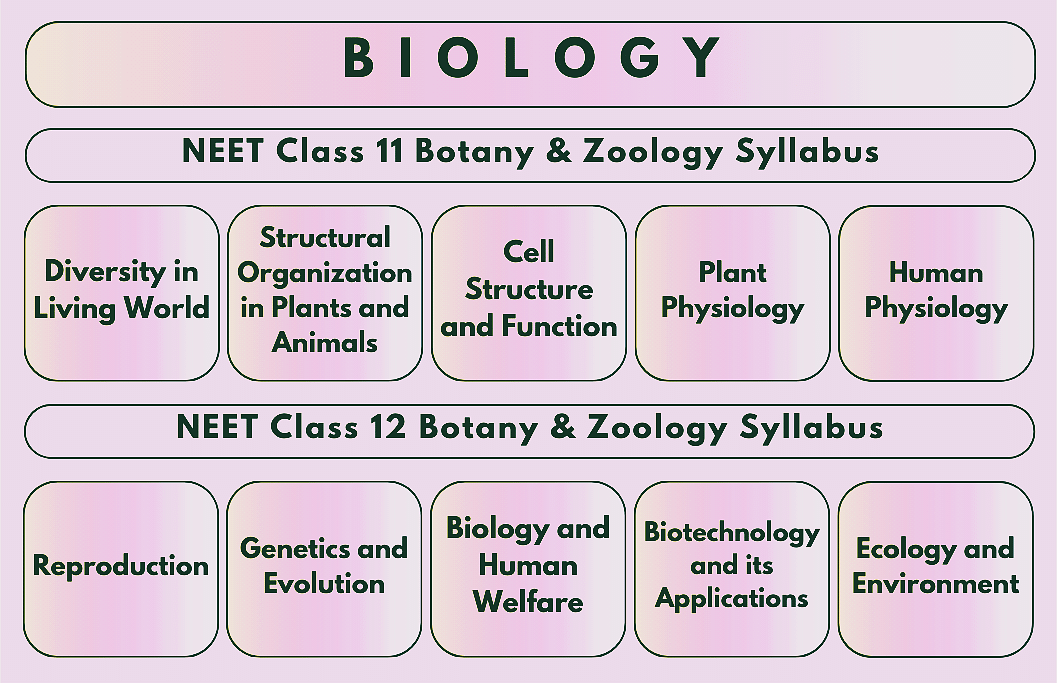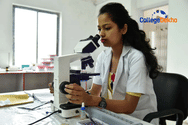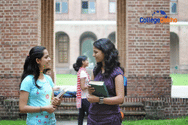1 | Diversity in Living World | - What is living?
- Biodiversity
- Concept of species and taxonomic hierarchy
- Binomial nomenclature
- Need for classification
- Taxonomy & Systematics
|
- Five kingdom classification
- Salient features and classification of Monera
- Protista and Fungi into major groups: Lichensl Viruses and Viroids.
|
- Salient features and classification of plants into major groups, Bryophytes, Pteridophytes, Gymnosperms
|
- Salient features and classification of animals-nonchordate up to phyla level and chordate
up to class level |
2 | Human physiology | - Breathing and Respiration: Respiratory organs in animals (recall only)
- Respiratory system in humans; Mechanism of breathing and its regulation in human exchange of gases, transport of gases and regulation of respiration Respiratory volumes
- Disorders related to respiration-Asthma Emphysema, and Occupational respiratory disorders.
|
- Body fluids and circulation: composition of blood, blood groups, coagulation of blood
- Composition of lymph and its function
- Human circulatory system structure of human heart and blood vessels
- Cardiac cycle, cardiac output. ECG, Double circulation;
- Regulation of cardiac activity
- Disorders of circulatory system-Hypertension, coronary
artery disease, Angina pectoris, and Heart failure. |
- Excretory products and their elimination: Modes of excretion- Ammonotelism, ureotelism, uricotelism.
- Human excretory system-structure and function
- Urine formation, osmoregulation
- Regulation of kidney function-Renin-angiotensin, Atrial
Natriuretic Factor' ADH and Diabetes insipidus. - Role of other organs in excretion
- Disorders; Uraemia, Renal failure, Renal calculi, Nephritis;
- Dialysis and artificial kidney.
|
- Locomotion and Movement
- Types of movement- ciliary, flagellar, muscular
- Skeletal muscle- contractile proteins and muscle contraction
- Skeletal system and its functions
- Joints; Disorders of the muscular and skeletal system- Myasthenia gravis, Tetany, Muscular Dystrophy, Arthritis, Osteoporosis, Gout.
|
- Neural control and coordination: Neuron and nerves
- Nervous system in humans central Nervous system, peripheral nervous system and visceral nervous system
- Generation and conduction of nerve impulse
|
- Chemical coordination and regulation
- Endocrine glands and hormones
- Human endocrine system-Hypothalamus, pituitary, pineal, Thyroid, parathyroid, Adrenal, Pancreas, Gonads
- Mechanism of hormone action (Elementary idea)
- Role of hormones as messengers and regulators
- Hypo-and hyperactivity and related disorders (common
- disorders e.g. Dwarfism, Acromegaly, Cretinism, goiter, exophthalmic goiter, diabetes, Addison's disease).
|
3 | Structural Organisation in Animals & Plants | - Animal tissues; Morphology, anatomy and functions of different systems (digestive, circulatory, respiratory, nervous and reproductive) of an insect (Frog). (Brief account only)
Note: Frog is not an insect. It is anticipated that NMC NEET syllabus 2026 was released with some errors that will be rectified in the near future. |
- Morphology and modifications; Tissues; Anatomy and functions of different parts of flowering plants: Root, stem, leaf, inflorescence- cymose and racemose, flower, fruit and seed.
|
4 | Cell Structure and Function | - Cell theory and cell as the basic unit of life
- Structure of prokaryotic and eukaryotic cell
- Plant cell and animal cell; Cell envelope, cell membrane, cell wall
- Cell organelles structure and function
- Endomembrane system-endoplasmic reticulum Golgi bodies, lysosomes, vacuoles; mitochondria, ribosomes, plastids, micro bodies
- Cytoskeleton cilia flagella centrioles (ultra structure and function)
- Nucleus-nuclear membrane, chromatin, nucleolus.
|
- Chemical constituents of living cells
- Biomolecules-structure and function of proteins, carbohydrates, lipids, nucleic acids
- Enzymes-types, properties, enzyme action, classification and nomenclature of enzymes
|
- B Cell division: Cell cycle, mitosis, meiosis and their significance
|
5 | Plant Physiology | - Photosynthesis: Photosynthesis as a means of Autotrophic nutrition
- Site of photosynthesis takes place pigments involved in Photosynthesis (Elementary-.idea)
- Photochemical and biosynthetic phases of photosynthesis; Cyclic and non-cyclic and photophosphorylation chemiosmotic hypothesis
- Photorespiration C3 and C4 pathways; Factors affecting photosynthesis
|
- Respiration: Exchange gases
- Cellular respiration-glycolysis, fermentation (anaerobic),TCA cycle and electron transport system (aerobic)
- Energy relations- Number of ATP molecules generated Amphibolic pathways
- Respiratory quotient.
|
- Plant growth and development
- Seed germination; phases of plant growth and plant growth rate
- Conditions of growth- Differentiation, dedifferentiation and redifferentiation
- The sequence of developmental process in a plant cell
- Growth regulators - auxin, gibberellin, cytokinin, ethylene, ABA
|












